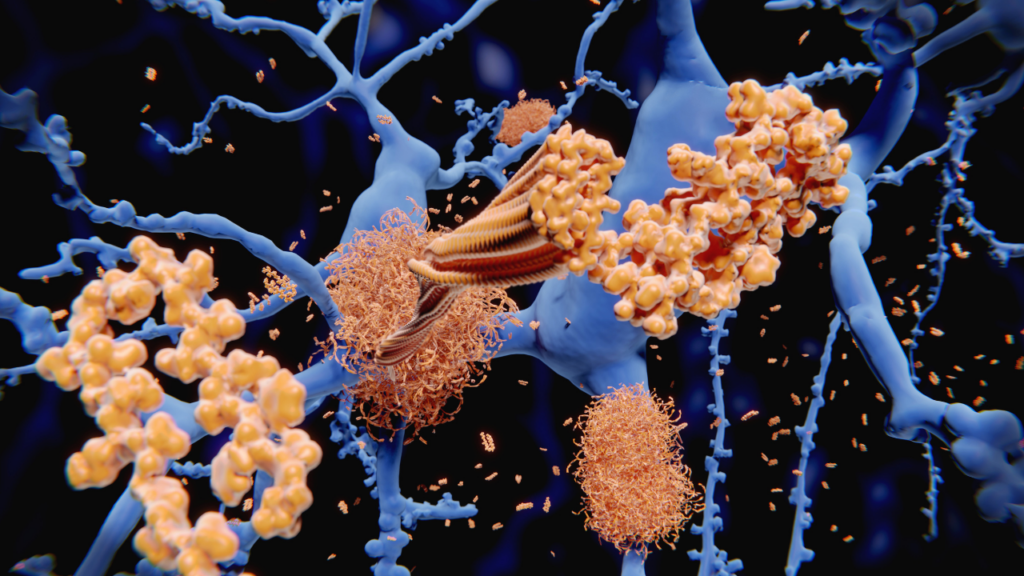|
Getting your Trinity Audio player ready...
|
In the world of fitness, individuals delve into various methods in the pursuit of their dream physique, ranging from rigorous training programs to specialized diets. Amidst it all, peptides have been making waves as the next big thing. Peptides are small chains of amino acids, also known as the building blocks of proteins, gaining attention for their potential to enhance muscle growth and accelerate recovery.
In this blog, we will be focusing on the science behind these specialized proteins and understand how they work.
What’s a Peptide?
Peptides are short chains of amino acids linked together by peptide bonds. They are important for the functioning of cells, tissues, and organs. Peptides can be used as supplementation to increase lean muscle mass, reduce fat, improve strength and endurance, and speed up recovery time between workouts.
They work in the body by stimulating the production and release of human growth hormone (HGH), which enhances muscle growth and promotes the loss of body fat. Peptides have similar effects to steroids but with milder and safer alternatives, leading to fewer side effects.
How do Peptides Enhance Muscle Growth?
Promoting Protein Synthesis
Peptides can stimulate protein synthesis, the process by which amino acids are assembled into new muscle tissue. This enhanced protein synthesis leads to increased muscle mass and strength.
Increasing Growth Hormone Release
Studies show some peptides, such as Ipamorelin and CJC-1295, can stimulate the release of GH, a hormone known for its anabolic effects on muscle growth. GH promotes protein synthesis, cell growth, and tissue repair, all of which contribute to muscle hypertrophy.
Reducing Muscle Damage and Inflammation
Peptides like BPC-157 can help reduce muscle damage and inflammation, which are often associated with strenuous exercise. This can lead to faster recovery and improved performance in subsequent workouts.

Top Peptides for Stronger Muscles
BPC-157
BPC-157 is made up of 15 amino acids. It helps with tendon and muscle healing and improves digestive function. The peptide speeds up the healing of different tissues like tendons, ligaments, muscles, and other connective tissues. While it’s not a top muscle-building peptide, it’s valued for supporting recovery from sports injuries and enhancing overall muscle function.
Current research suggests that BPC-157 is safe and well-tolerated, with no significant adverse effects reported in human studies. Because of its natural occurrence in the body and limited side effects, athletes and bodybuilders often choose it to improve their recovery and overall physical performance.
IGF-1 LR3
IGF-1 LR3, also known as Insulin-like Growth Factor-1 Long R3, helps build muscles by triggering protein production and muscle growth. It’s unique because it not only promotes muscle growth but also breaks down body fat. A blog from Valhalla Vitality states it can increase HGH or IGF-1 levels in humans, but using it for muscle building carries potential risks like tissue overstimulation and irregular cell growth.
So, it’s important for people thinking about using IGF-1 LR3 to build muscles to be careful and talk to a healthcare professional about possible benefits and risks.
CJC-1295 without DAC
CJC-1295 without DAC stimulates the production and release of human growth hormone. Unlike CJC-1295 with DAC, this version doesn’t have the drug affinity complex (DAC) attachment, so it has a shorter half-life in the body. This means more frequent dosing may be needed compared to the version with DAC.
For muscle building, CJC-1295 without DAC triggers the liver to release insulin-like growth factor-1 (IGF-1), enhancing muscle growth and promoting muscle protein production. This also indirectly contributes to the breakdown of body fat. Additionally, the peptide may aid in muscle recovery after workouts, allowing for consistent and effective training.
While studies suggest potential benefits for muscle growth and recovery, some possible adverse effects include joint pain, water retention, and an increase in appetite. It’s important for individuals considering the use of this peptide to be aware of these potential side effects and consult with a healthcare professional before starting any peptide-based regimen.
Follistatin
Follistatin is a peptide that may help with building muscles. It is thought to work by reducing myostatin, a protein that limits muscle growth. By reducing myostatin, Follistatin may support increased muscle growth and better muscle function.
Using Follistatin for muscle growth may lead to bigger, stronger, and more enduring muscles. However, the long-term effects and safety of Follistatin are not yet fully known.
While there are currently no known side effects or risks linked to using Follistatin for muscle building, it is important to be cautious and seek expert advice before adding it to your fitness routine.
Hexarelin
Hexarelin is a synthetic growth hormone-releasing peptide. It stimulates the pituitary gland to produce and release growth hormone. This can lead to increased muscle growth and improved fat loss.
Compared to other peptides, Hexarelin is known for its ability to directly stimulate growth hormone release, potentially making it more potent for muscle building. However, like other peptides, potential side effects may include increased hunger, decreased insulin sensitivity, and increased cortisol levels.
It’s important to note that the long-term effects and safety of Hexarelin are not yet fully understood. Individuals considering its use should exercise caution and consult with a healthcare professional before use.
Ipamorelin
Ipamorelin stimulates the production and release of human growth hormone. It does this by increasing the release of HGH and insulin-like growth factor-1 (IGF-1) in the body. This promotes muscle protein production and muscle growth.
Compared to other peptides like CJC-1295 and MK-677, Ipamorelin offers similar benefits as HGH with fewer side effects. This makes it a popular alternative among bodybuilders.
While taking Ipamorelin may not be entirely free from side effects, it is generally considered milder and safer than anabolic steroids. Taking Ipamorelin as a peptide supplement offers the potential to enhance muscle growth, reduce body fat, and increase energy levels during exercise.
Despite its promising benefits, research on the tangible effects of Ipamorelin on body composition, exercise performance, and recovery is still limited. Further studies are required to determine its efficacy and potential adverse effects.
Sermorelin
Sermorelin stimulates the production and release of human growth hormone. It promotes the release of insulin-like growth factor-1 (IGF-1) from the liver, triggering muscle protein production and growth. Compared to other peptides, Sermorelin offers similar benefits to HGH with potentially fewer side effects, making it appealing to bodybuilders.
There are some studies on the effects of Sermorelin on body composition, exercise performance, or recovery, especially in well-trained individuals. While generally well-tolerated, potential side effects such as injection site reactions, headaches, dizziness, or more serious complications at high doses cannot be ruled out. Further research is needed to determine the efficacy and safety of Sermorelin for muscle building.
Tesamorelin
Tesamorelin is a peptide that stimulates the pituitary gland to release growth hormone. It binds to specific receptors in the anterior pituitary gland, leading to increased growth hormone levels. This promotes the production of insulin-like growth factor-1 (IGF-1), which triggers muscle protein production and muscle growth.
Additionally, it indirectly promotes the breakdown of body fat.
However, Tesamorelin may have some adverse effects, such as joint pain, muscle pain, and water retention. Despite this, it stands out as a peptide that targets muscle growth and promotes the loss of body fat. Its ability to stimulate IGF-1 production and promote muscle protein synthesis makes it a valuable option for individuals looking to enhance their muscle-building efforts.

Cautions for Muscle Growth Peptides
While peptides offer potential benefits for muscle growth and recovery, it’s important to exercise caution before incorporating them into your regimen. The scientific evidence on peptides for muscle growth is still relatively limited, and more research is needed to fully understand their long-term effects and safety.
Peptides can also respond differently among individuals, and the optimal dosage and administration method may differ from person to person. It is advised to consult with a healthcare professional or registered dietitian before using peptides, especially if you have any underlying health conditions or are taking medications.
In Summary
Peptides hold promise as a potential tool for enhancing muscle growth and performance, but their use requires a cautious and informed approach. While research is ongoing, it’s crucial to prioritize safety, individual needs, and professional guidance before incorporating these specialized proteins into your fitness regimen. As with any supplement, moderation and a balanced approach to training and nutrition remain paramount for achieving sustainable results.
Nevertheless, it’s important to remember that some peptides have yet to been approved by the FDA.
Questions People Often Ask
Which Peptide Is the Top Muscle Builder?
Peptides like BPC-157 are popular for helping muscles, tendons, and ligaments heal faster. This makes it helpful for recovering from soft tissue injuries and indirectly aiding muscle building.
Other peptides such as IGF-1 LR3, CJC-1295 without DAC, Follistatin, Hexarelin, Ipamorelin, Sermorelin, and Tesamorelin also play a role in muscle building. Each peptide works differently in the body, leading to diverse muscle-building pathways, catering to individual bodybuilder needs.
Compared to anabolic steroids, peptides offer a safer option for muscle building, with a variety of actions like muscle growth, fat reduction, and improved recovery. Peptides are known for achieving these effects without the harsh and often irreversible side effects of steroids, making them a practical choice for muscle building and body improvement.
What Peptide Works Like Growth Hormone?
Peptides like Ipamorelin, CJC-1295, and MK677 work similarly to growth hormones. They stimulate the production and release of human growth hormone, promoting muscle growth and aiding in the breakdown of body fat. These peptides are believed to have fewer side effects than HGH, making them a safer alternative for bodybuilders. More research is needed to understand their impact on muscle composition, exercise performance, and recovery.
However, current evidence suggests that these growth hormone secretagogues (GHS) offer a promising way to optimize muscle gains with minimal risk.
Can Taking Peptides Cause Problems?
Taking peptides for muscle growth can have potential problems. This is especially true when not used under medical supervision. Some peptides may have adverse effects on the endocrine system, which can lead to disruptions in natural hormone production and regulation.
Additionally, there is a lack of conclusive evidence on the long-term effects of using peptides. This raises concerns about their safety and potential health risks.
While peptides are generally considered to be milder and safer than anabolic steroids, there are still potential side effects associated with their use for muscle building. These side effects may include joint pain, water retention, and increased hunger, among others.
Do Peptides Act Like Steroids?
Peptides and steroids have different effects on muscle building and performance.
Peptides are short chains of amino acids that stimulate the production of human growth hormone and insulin-like growth factor-1 (IGF-1). This helps promote muscle growth and the breakdown of body fat.
On the other hand, steroids are synthetic compounds that mimic the effects of testosterone. They increase protein synthesis, muscle growth, and reduce recovery time.
The potential risks and benefits of using peptides compared to steroids in bodybuilding and athletics are noteworthy. Peptides offer milder and safer alternatives to anabolic steroids, with reduced side effects and less impact on hormone levels.
Disclaimer: Please note that many peptide therapies are not FDA-approved and their efficacy and safety have not been fully established. It is crucial to consult with your healthcare provider before starting any new supplements or treatments, including peptide therapy.
References
Sewald, Norbert, and Hans-Dieter Jakubke. Peptides: chemistry and biology. John Wiley & Sons, 2015.
Teichman, Sam L., Ann Neale, Betty Lawrence, Catherine Gagnon, Jean-Paul Castaigne, and Lawrence A. Frohman. “Prolonged stimulation of growth hormone (GH) and insulin-like growth factor I secretion by CJC-1295, a long-acting analog of GH-releasing hormone, in healthy adults.” The Journal of Clinical Endocrinology & Metabolism 91, no. 3 (2006): 799-805.
Seiwerth, Sven, Rudolf Rucman, Branko Turkovic, Marko Sever, Robert Klicek, Bozo Radic, Domagoj Drmic et al. “BPC 157 and standard angiogenic growth factors. Gastrointestinal tract healing, lessons from tendon, ligament, muscle and bone healing.” Current Pharmaceutical Design 24, no. 18 (2018): 1972-1989.
D’Agostino, Philip. “IGF-1 LR3: The rapid-acting growth hormone alternative.”
Save, N. O. W. “WHAT IS CJC-1295 NO DAC?.”
Lee, Se-Jin, Yun-Sil Lee, Teresa A. Zimmers, Arshia Soleimani, Martin M. Matzuk, Kunihiro Tsuchida, Ronald D. Cohn, and Elisabeth R. Barton. “Regulation of muscle mass by follistatin and activins.” Molecular endocrinology 24, no. 10 (2010): 1998-2008.
Ghigo, Ezio, Emanuela Arvat, L. Gianotti, B. P. Imbimbo, V. Lenaerts, R. Deghenghi, and Franco Camanni. “Growth hormone-releasing activity of hexarelin, a new synthetic hexapeptide, after intravenous, subcutaneous, intranasal, and oral administration in man.” The Journal of Clinical Endocrinology & Metabolism 78, no. 3 (1994): 693-698.
Johansen, Peter B., Jette Nowak, Christian Skjærbæk, Allan Flyvbjerg, Troels T. Andreassen, Michael Wilken, and Hans Ørskov. “Ipamorelin, a new growth-hormone-releasing peptide, induces longitudinal bone growth in rats.” Growth Hormone & IGF Research 9, no. 2 (1999): 106-113.
Walker, Richard F. “Sermorelin: A better approach to management of adult-onset growth hormone insufficiency?.” Clinical interventions in aging 1, no. 4 (2006): 307-308.
Wang, Ying, and Brian Tomlinson. “Tesamorelin, a human growth hormone releasing factor analogue.” Expert Opinion on Investigational Drugs 18, no. 3 (2009): 303-310.



